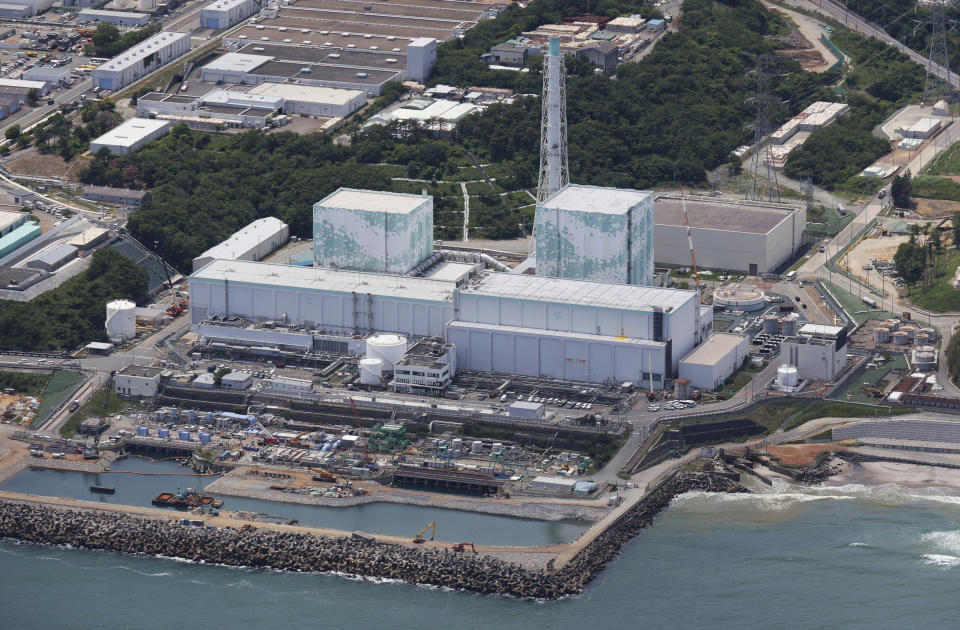Some of Japan's neighbors are freaking out over the release of Fukushima water. Should they be?
South Korea’s official endorsement of the plan has done little to put its public at ease, as officials cope with panic-buying, protests and consumer boycotts. Some stores even ran out of sea salt and imposed a purchasing limit.
Elsewhere, China has barred seafood exports from several Japanese prefectures and Hong Kong has followed suit after Tokyo won approval from the U.N.’s nuclear watchdog last week for its plan to release treated radioactive water from the tsunami-wrecked Fukushima Daiichi nuclear plant into the Pacific Ocean.
The Japanese government and the plant’s operator, the Tokyo Electric Power Company, have said the water, currently being held in hundreds of tanks on land, must be removed to prevent accidental leaks and make room for the plant’s decommissioning.
But despite their reassurances that the plant meets international safety standards and support from the International Atomic Energy Agency, several Asian countries remain unconvinced, slapping export bans on seafood fished off several regions of Japan and imposing additional food safety inspections on food from the Fukushima region.

Leading the criticism is China, which has fiercely opposed the plan. Its customs agency vowed Friday that it would take “all necessary measures” to abate the worries of its consumers. This included a de facto ban on imports from 10 Japanese prefectures, including Fukushima.
“Twelve years on, Japan has chosen to shift the risk of nuclear contamination onto the whole of humanity,” Chinese Foreign Ministry spokesperson Wang Wenbin told a news conference last week.
Li Fengmin, a professor of marine physics and biology in the Ocean University of China, told NBC News he was worried that the IAEA issued its recommendations under pressure from the Japanese government.
“My personal concern is there might be political, economic or diplomatic gaming hiding behind IAEA’s conclusion,” he said, adding that Japan was dumping the wastewater because it was “a more cost-effective choice.”
In one of the world’s worst disasters, on March 11, 2011, the region was hit by a 9.0-magnitude earthquake — the strongest in Japan’s history. A deadly wall of water then slammed through the walls of the nuclear plant, knocking out power supply, including backup generators, and flooding parts of the facility. Three nuclear reactors melted down, spewing radioactive particles into the air.

Authorities acted quickly, scrubbing buildings and removing about 4 inches of soil and vegetation from the surrounding area. But the massive cleanup, compensation and decommissioning, generated massive costs for TEPCO and last year, a Japanese court ruled the disaster could’ve been prevented if the company had exercised due care.
In line with Beijing’s decision to ban Japanese seafood, Hong Kong Chief Executive John Lee said Tuesday that the city will ban “a large number of prefectural sea products” from Japan because of the Fukushima wastewater discharge.
And last week, a fish market in South Korea tested its seafood for radiation to dispel fears. This took place despite an assessment by South Korea’s government concluded the wastewater release would have an “insignificant” impact on its water.
Some Japanese fishing organizations, worried about the reputation of their catches have also criticized the plan.
Experts however, have insisted that it is safe.
The radiation levels that would actually pose a risk to human health are “thousands of times more” than the ones due to be released, said Robin Grimes, a material physics professor at Imperial College London, who was also a part of Britain’s emergency response group to Fukushima.
Nigel Marks, an associate professor at Curtin University in Australia, added that the radiation exposure is the same or even below the levels of getting a tooth X-rayed.
Japan is deploying a specialized system called advanced liquid processing system, which according to the IAEA’s report, is a “pumping and filtration system” that uses a series of chemical reactions to remove the various radioactive substances from the water.
The increase in radioactivity will be “very, very tiny,” said Mark Foreman, an energy and materials associate professor at Chalmers University of Technology in Sweden. He added that substances like tritium, which cannot be removed by the advanced liquid processing system, will get enormously diluted by the Pacific.
However, Ken Buesseler, a marine radiochemist at Woods Hole Oceanographic Institution said he was “disappointed” that other alternatives like using the water for making concrete were “not fully considered,” adding the advanced liquid processing system was yet to prove its effectiveness.
Japan hopes to start releasing the water this summer and continue to do so over many decades.
“Having to keep it for two or three hundred years when tritium becomes undetectable is just mad,” Grimes said.
“The risk would be even lower than other plants around the world because the Japanese have removed those radioactive species to even greater extent,” he added.
This article was originally published on NBCNews.com

